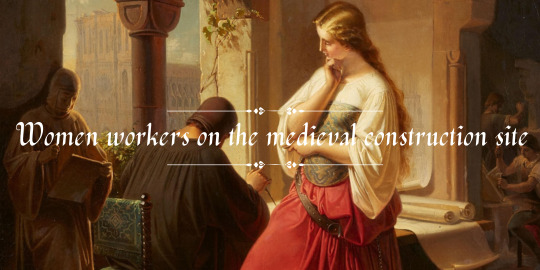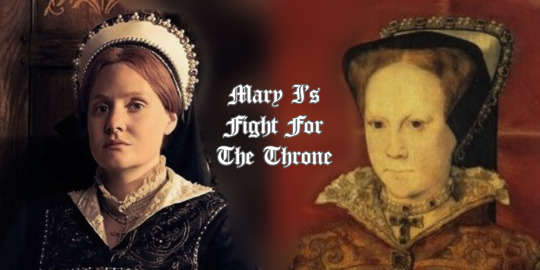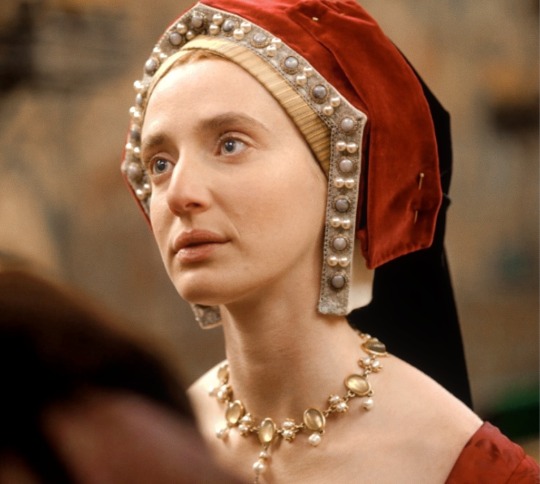Text

"Women could be found working on construction sites, if only occasionally, including in specialized roles such as carpenters and masons. The research is found in the article, “Appropriate to Her Sex?” Women’s Participation on the Construction Site in Medieval and Early Modern Europe,” by Shelley E. Roff.
She surveyed a wide variety of records from throughout Western Europe, including tax records, inventories of wages paid on construction sites, and municipal accounts, and discovered numerous instances of women working alongside men on construction sites as far back at the 13th century. Most of these women were employed as day laborers, carrying out tasks such as moving water and building supplies around the sites, digging ditches and serving as assistants to bricklayers and stonemasons. For example, in the Spanish city of Seville during the 14th century, women were hired to dig trenches for the foundation of a new city wall, while at the nearby city of Toledo, one or two women were hired each day for the construction of the city’s cathedral, where they gathered lime and worked on the roof. Meanwhile in the French city of Toulouse, almost half the laborers working on the Perigord college site were women. Ross also finds several examples from England and Germany.
Roff notes that previous historians have seen many examples of women working on construction sites in their research, but they had believed that these were just abnormal exceptions caused by economic crises, or because the male population had been killed off through war or disease. But her new study suggests that women construction workers were more than just odd occurences. She explains that “the expansion of urban centers starting in the thirteenth century set off a trend of increasing female employment for day laborers and in the crafts, which only began to contract on occasion for women working in the crafts in the sixteenth century with ensuing economic crises.”
She also notes that in almost all accounts surveyed, the women were paid at a lower rate than the men, which would make the “a cost-effective solution” for site supervisors looking for ways to reduce expenses. The women who took these jobs would have come from society’s poor – those women who could not maintain their households and families just from their husbands’ (if they had one) income.
Roff also finds records showing women taking part in specialized building trades. In London in 1383, Katherine Lightfoot is recorded as the supplier of 2,000 painted tiles for bath in the King’s palace. Meanwhile, tax records from Paris during the years 1296 and 1313 reveal the existence of two female masons, a tiler and a plasterer. These women were not poorer individuals, rather they were the wives of male craftsman, and in some cases their widows. The 15th-century French writer Christine de Pizan noted in her book The Treasury of the City of Ladies that craftswomen, “should learn all the shop details so that she can properly supervise the workers when her husband is away or not paying attention.”
Women workers could be found on the medieval construction site, Medievalists.net
189 notes
·
View notes
Text

Mary I's Fight For The Throne
c.20th April 1553 - Mary is given a gift
The Duke of Northumberland is still keeping Mary informed of the health of Edward, though as Imperial ambassador Jehan Scheyfve notes "not with so much detail as before." 1
At the end of April Northumberland sends her "her full arms as Princess of England, as she used to bear them in her father, the late King's, lifetime.". 2 Mary's coat of arms had been stripped from her aged 18 after the birth of her sister Elizabeth, where "the badges usually born by her lackeys on their coats-of-arms were instantly removed, and replaced by the King's scutcheon." 3

Her coat of arms combined the Tudor arms of the English lion and French fleur de lys, with her mother's Aragon arms, supported by a crowned falcon and greyhound; the greyhound belonged to the Richmond family - Mary's great-grandfather Edmund Tudor, was the first Earl of Richmond. 4
Meanwhile...
Jousts that were supposed to take place on May Day (1st May) are put off until Whitsuntide (25th May). 5
The Duke of Northumberland arranges to marry his youngest son Guildford, to Jane Grey, eldest daughter of the Duchess of Suffolk and cousin of Edward and Mary. 6
Sources:
1. Spanish State Papers, 28th April 1553
2. Spanish State Papers, 28th April 1553
3. Spanish State Papers, 15th September 1533
4. College of Arms, London website
5. Spanish State Papers, 28th April 1553
6. Spanish State Papers, 28th April 1553
2 notes
·
View notes
Text

Mary I's Fight For The Throne Masterpost
An ongoing series detailing the events of 1553, where Mary Tudor assembled an army against her brother's nominated successor, Lady Jane Grey, to become England's first crowned queen.
10th February
13th March
17th April
*This post will be updated with each new entry
9 notes
·
View notes
Text

Mary I's Fight For The Throne
17th April 1553 - Mary signs Edward VI's property deed
In mid March John Dudley, Duke of Northumberland, writes "privately and personally" to Mary, informing her that King Edward is "very thin and weak." 1 However, despite still suffering from the effects of illness, Edward is still able to get certain matters of state done.
There had been conversation between Mary and Edward regarding a potential property exchange since December the year prior, where Mary wrote to her brother stating she was "willing to exchange her manors of St. Osyth, Little and Great Clafton and Willeigh, for other land." 2
The deed confirming this exchange is signed by Mary on the 17th April, at her manor of Beaulieu. 3
This transfer of properties is significant to the siblings; her manor at Saint Osyth was where Mary had attempted to flee England for the Holy Roman Empire in 1550. In June, the Imperial ambassador would confirm the exchange targeted "particularly those [buildings] that are situated near the sea." 4
With her costal properties taken from her, Mary now has less opportunity to escape the country if in danger.
Meanwhile...
When the weather is "soft and bright" 5 King Edward, under his doctor's advice, walks around the park of Westminster.
In Parliament, the Archbishop of Canterbury, Thomas Cranmer, and the Duke of Northumberland argue over Cranmer's proposed canon law. Northumberland warns Cranmer that "some were saying that men would easily fall back into the old religion." 6
On the 11th April, King Edward leaves Westminster for Greenwich via the Thames, where "all the ships shot off guns." 7
Sources
1. Spanish State Papers, 13th March 1553
2. Calendar of State Papers Domestic Edward VI, Vol. 15 December 1552
3. Calendar of the Patent Rolls, Edward VI, Vol. V
4. Spanish State Papers, 11th June 1553
5. Spanish State Papers, 10th April 1553
6. Spanish State Papers, 10th April 1553
7. Diary of Henry Machyn
5 notes
·
View notes
Text



Imagine Mary doing her accounting with silver counters on her official looking desk! Working away on her Book of Rates that became used for decades after…
And someone’s even made a YouTube video showing how it worked back then!
#could not be me lol#the amount of research I’m doing for this novel for random scenes is insane lol
4 notes
·
View notes
Text
Anyway, related to that ask, I hate how Mary being mistaken in her pregnancies is looked on as just part of her evil, dour persona. Like of course she was infertile, barren, when she was a teeth gnashing monster. When the reality is it must have been heartbreaking and humiliating.
Her mother had a false pregnancy with her first child, it’s speculated Anne Boleyn did, Marguerite of Navarre sister to the King of France had one… yet Mary’s is the most well known and instead of gaining sympathy for it people laugh and use it as another stick to beat her reputation with.
And it’s even more interesting when you compare it to her sister the successful “Virgin” queen who willingly chose not to have children.
51 notes
·
View notes
Note
Hello ! I was wondering on what is your take on the false pregnancies of Mary Tudor . Do you think that she had a miscarriage early on her pregnancy? Or do you think it was an actual phantom pregnancy.
I tend to think she had an early miscarriage in 1555 that manifested as a phantom pregnancy for a few reasons.
It's shown in various different sources that Mary is reluctant throughout her 'pregnancy 'to confirm it's real.
An English ambassador told the Emperor in November that Mary "will not confess the matter until it is proved to her face" and it's only around Christmas Mary acknowledges that "As for that child which I carry in my belly, I declare it to be alive.” Carole Levin points out it's a strange word choice and I agree.
The biggest piece of evidence is at the beginning of May in my opinion. When the court are awaiting her child's birth, it's recorded that "according to her count it would not be strange if her delivery were to be delayed until the 6th of June."
Mary herself seemed to think she was a month behind her pregnancy then everyone else and there must be a reason for that.
We know she was recorded as being ill in mid September: "I have noticed her feeling sick (or seen her being sick) besides which her doctor has given me positive assurance, saying that if it were not true all the signs described by physicians would prove to be fallacious." I don't find it hard to believe Mary found herself nauseous and bleeding and thought it was a late period (it's well known she suffered badly with menstruation) or an early miscarriage, while her optimistic ladies and doctors handwaved it all away as usual symptoms of pregnancy, which are real and common.
With the altered hormones in Mary's body it would lead to her still producing pregnancy symptoms for a while (you can still produce them several weeks after miscarrying). I think this is likely what led her to later believe she was pregnant after all, but due after everyone else expected.
It's 9 months from October to June, when Mary believed she was due...
This is all my personal theory, but to me this explains her initial unsurety, the peculiar wording declaring she's not just pregnant but the babe in her belly is "alive", and her miscounting the dates compared to everyone else.
As for the 1557/8 I'm less sure of that just because there's hardly any information about it. It seems again Mary, despite her portrayal in media, was not certain of the pregnancy because she delayed informing Philip until what she thought was the seventh month.
19 notes
·
View notes
Text


Lilit Lesser as Princess Mary (Wolf Hall: Season One/ Season Two)
149 notes
·
View notes
Text
"Robert, please escort Sirs Gates and Palmer out of my palace. I would do so myself, but I have more work to sort now my staff force is diminished.”
“You appear to have plenty to me.” Palmer sniffs, glaring at the six in formation around Mary.
“As a third born son I do not expect you to be knowledgeable of the requirements of living as an heir, Sir Palmer.”
really this book is just an excuse to write Mary being sassy 😂
3 notes
·
View notes
Text
“Philip and Mary gave lavish and brutal entertainment on Easter Sunday, 18th April [1557], when [secretary for the Council of State in the Netherlands, Jose de] Courteville reports that they hosted a feast “with many dances, combats of dogs or bears, bulls and monkeys on horseback”.”
— Nicolaus
Mameranus, Poetry and Politics at the Court of Mary Tudor by Matthew Tibble,
2020 , page 108
24 notes
·
View notes
Text
“As [French ambassador] Noailles reported, Mary would force ‘not only men, but also the elements themselves, to consent to her will’.”
— Mary Tudor England’s First Queen by Anna Whitelock, 2009, page 288
67 notes
·
View notes
Note
I have the article- The Local Community Revisited- as a PDF; do you want me to send it to you?
Omg really? You’re a queen! 👑 I would love that thank you 🥰
0 notes
Text
"Trusty and right wellbeloved, we greet you well and your letter addressed hither perceive your diligence, your faithfulness and true hearts ready to serve and to have defended us against our traitors and rebels, who now God be thanked are under feet, and the chief thereof as the Duke of Northumberland and others admitted to ward in our Tower of London and other prisons. Wherefore as ye have well deserved we give you and all our good subjects in your company our right thanks, minding to consider the same to your comfort, requiring and praying you all this trouble now being overlaid, to desire our said subjects in God’s peace and ours to repair home to their dwelling places and there to remain till we shall need their further services, with continual prayer to God for his grace to preserve us and the coming wealth to his glory. Given under our signet at our town of Colchester, the first year of our reign."
- Mary I to Sir Peter Carew, Sir Thomas Denys, and various esquires, July 1553
5 notes
·
View notes
Text
oooh I just found a letter from Mary addressed before she got to London in July 1553!
0 notes
Text

WTF?!
£44 for 24 hours access to an article?! History books should be free to read because you're expanding your knowledge!
10 notes
·
View notes
Text

Mary I's Fight For The Throne Masterpost
An ongoing series detailing the events of 1553, where Mary Tudor assembled an army against her brother's nominated successor, Lady Jane Grey, to become England's first crowned queen.
10th February
13th March
17th April
*This post will be updated with each new entry
9 notes
·
View notes
Text
So excited for you guys to read the July posts about Mary/Jane Grey there’s so many sources I found in my research that are never mentioned in any Mary biography! We have John Knox mentions, fighting sailors, Mary’s first official proclamation to rally people to her cause, letters from Jane and Mary with their handwritten signatures included… 😍 hopefully you’re gonna love them and learn loads like I did!
7 notes
·
View notes